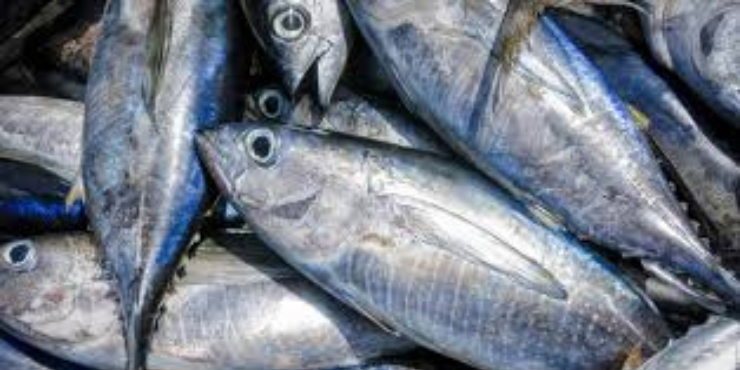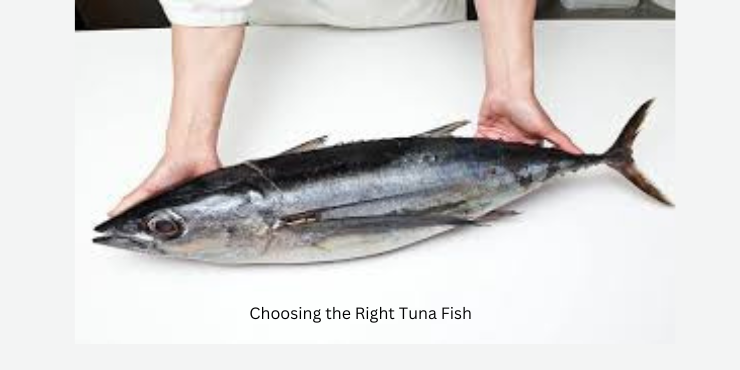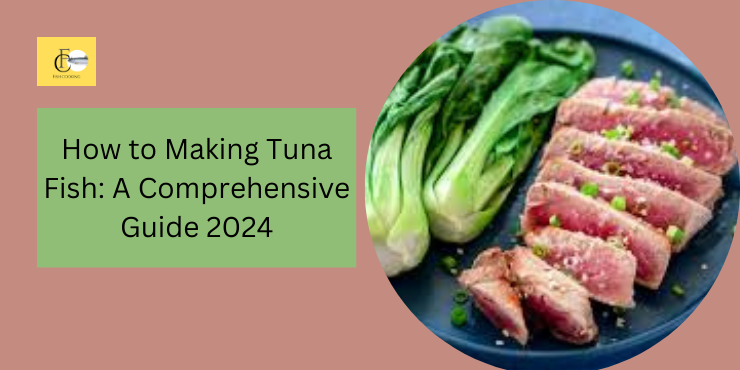How to Making Tuna Fish
Tuna fish is a versatile and nutritious ingredient that can be a star in numerous dishes. Whether you’re a seasoned chef or a beginner in the kitchen, learning how to make tuna fish can elevate your culinary skills. In this guide, we’ll explore the benefits of tuna, various recipes, and tips to ensure your tuna dishes are always delicious.
Health Benefits of How to Making Tuna Fish

Rich in Protein
Tuna fish is a powerhouse of protein, making it an excellent choice for those looking to build muscle or maintain a healthy diet. A single serving of tuna provides a significant amount of the daily recommended protein intake, essential for body repair and growth.
Omega-3 Fatty Acids
Tuna is rich in omega-3 fatty acids, which are known for their heart-healthy benefits. These fatty acids help reduce inflammation, lower blood pressure, and decrease the risk of heart disease.
Vitamins and Minerals
Tuna fish is loaded with essential vitamins and minerals, including vitamin D, vitamin B12, and selenium. These nutrients play a crucial role in maintaining energy levels, supporting bone health, and boosting the immune system.
Different Types of How to Making Tuna Fish
Albacore Tuna
Albacore tuna, also known as white tuna, is a popular variety with a firm texture and mild flavor. It’s commonly found in canned form and is ideal for salads and sandwiches.
Bluefin Tuna
Bluefin tuna is prized for its rich, buttery flavor and is often used in sushi and sashimi. It’s considered a delicacy, and its high fat content makes it perfect for raw preparations.
Yellowfin Tuna
Yellowfin tuna, also known as ahi tuna, is known for its bright red flesh and slightly stronger flavor compared to albacore. It’s versatile and can be used in a variety of cooked and raw dishes.
Choosing the Right Tuna Fish

Fresh vs. Canned Tuna
When it comes to tuna, you can choose between fresh and canned. Fresh tuna offers a superior taste and texture, perfect for gourmet dishes. Canned tuna is convenient and has a long shelf life, making it ideal for quick meals.
Sustainable Fishing Practices
Sustainability is crucial when choosing tuna. Look for tuna that is caught using sustainable methods, such as pole and line fishing, to help protect ocean ecosystems and ensure the long-term availability of this resource.
Essential Ingredients for Tuna Recipes
Basic Pantry Staples
For most tuna recipes, you’ll need some pantry staples like olive oil, mayonnaise, lemon juice, and various seasonings. These ingredients help enhance the flavor of tuna and add depth to your dishes.
Fresh Ingredients
Fresh ingredients such as herbs, vegetables, and citrus fruits can elevate your tuna recipes. Think of adding chopped celery, onions, dill, and parsley to your tuna salad for a burst of freshness.
How to Prepare Tuna for Cooking
Cleaning and Slicing Fresh Tuna
If you’re working with fresh tuna, start by rinsing it under cold water and patting it dry. Use a sharp knife to slice the tuna into steaks or cubes, depending on your recipe.
Draining and Flaking Canned Tuna
For canned tuna, drain the liquid and use a fork to flake the tuna into small pieces. This step is crucial for incorporating tuna into salads, sandwiches, and pasta dishes.
Popular Tuna Fish Recipes
Tuna Salad
Tuna salad is a classic recipe that can be customized to your taste. It’s perfect for a quick lunch or a light dinner.
Tuna Sandwich
A tuna sandwich is a simple yet satisfying meal. You can make a basic version with just tuna and mayo, or add extras like pickles, celery, and spices for more flavor.
Tuna Pasta
Tuna pasta is a hearty and comforting dish. It combines pasta with tuna, vegetables, and a creamy or tomato-based sauce.
Recipe 1: Classic Tuna Salad
Ingredients
- 1 can of tuna, drained
- 1/4 cup mayonnaise
- 1 tablespoon lemon juice
- 1/4 cup chopped celery
- 1/4 cup chopped red onion
- Salt and pepper to taste
- Fresh parsley for garnish
Step-by-Step Instructions
- In a large bowl, combine the drained tuna and mayonnaise.
- Add the lemon juice, chopped celery, and red onion.
- Mix well and season with salt and pepper to taste.
- Garnish with fresh parsley before serving.
- Enjoy your classic tuna salad with crackers, on a sandwich, or on a bed of lettuce.
Recipe 2: Tuna Melt Sandwich
Ingredients
- 1 can of tuna, drained
- 2 tablespoons mayonnaise
- 1 tablespoon Dijon mustard
- 1/4 cup chopped pickles
- 2 slices of bread
- 2 slices of cheddar cheese
- Butter for spreading
Step-by-Step Instructions
- Preheat a skillet over medium heat.
- In a bowl, mix the drained tuna, mayonnaise, Dijon mustard, and chopped pickles.
- Spread the tuna mixture on one slice of bread, top with cheddar cheese, and close the sandwich with the other slice of bread.
- Butter the outside of the sandwich and place it in the skillet.
- Cook until the bread is golden brown and the cheese is melted, about 3-4 minutes per side.
- Serve the tuna melt sandwich hot and enjoy!
Recipe 3: Tuna Pasta Primavera
Ingredients
- 8 ounces of pasta (your choice)
- 1 can of tuna, drained
- 1 cup cherry tomatoes, halved
- 1/2 cup peas
- 1/4 cup olive oil
- 2 cloves garlic, minced
- 1/4 teaspoon red pepper flakes
- Salt and pepper to taste
- Fresh basil for garnish
Step-by-Step Instructions
- Cook the pasta according to package instructions until al dente. Drain and set aside.
- In a large skillet, heat the olive oil over medium heat.
- Add the minced garlic and red pepper flakes, sautéing until fragrant.
- Add the cherry tomatoes and peas, cooking until they begin to soften.
- Stir in the drained tuna and cooked pasta, mixing well.
- Season with salt and pepper to taste.
- Garnish with fresh basil before serving.
- Enjoy your tuna pasta primavera hot or cold.
Healthy Tuna Fish Variations
Low-Calorie Tuna Salad
For a lighter version of tuna salad, replace mayonnaise with Greek yogurt or a light vinaigrette. Add plenty of fresh vegetables like cucumber, bell peppers, and carrots for extra crunch and nutrition.
Gluten-Free Tuna Pasta
Use gluten-free pasta to make your tuna pasta dish suitable for those with gluten sensitivities. Ensure all other ingredients, like canned tuna and seasonings, are also gluten-free.
Tips for Cooking Tuna Fish
Avoiding Overcooking
Tuna can become dry and tough if overcooked. For fresh tuna steaks, aim for a sear on the outside while keeping the inside slightly pink. For canned tuna, simply warm it through without excessive cooking.
Enhancing Flavor
Enhance the flavor of tuna by marinating it before cooking. Use a mixture of soy sauce, ginger, garlic, and a touch of honey for a delicious Asian-inspired twist.
Storing and Preserving Tuna Fish
Refrigeration Tips
Store fresh tuna in the refrigerator and use it within 1-2 days for the best quality. Keep canned tuna in a cool, dry place, and refrigerate any leftovers in an airtight container.
Freezing Tuna Fish
You can freeze fresh tuna for up to three months. Wrap it tightly in plastic wrap and place it in a freezer bag. Thaw in the refrigerator before using. Canned tuna can also be frozen, but it’s best to transfer it to a freezer-safe container first.
Common Mistakes to Avoid
Using Low-Quality Tuna
The quality of your tuna significantly impacts the final dish. Always opt for high-quality, sustainably sourced tuna for the best flavor and nutritional benefits.
Not Balancing Flavors
Tuna has a strong flavor that needs to be balanced with other ingredients. Ensure you have a good mix of acidity, sweetness, and savory elements in your recipes to create a harmonious dish.
Conclusion
Tuna fish is a fantastic ingredient that can be used in a variety of delicious and nutritious dishes. Whether you’re making a simple tuna salad or an elegant tuna pasta, the key is to use high-quality ingredients and follow some basic cooking tips. Experiment with different recipes and enjoy the versatility of tuna fish in your culinary creations.
FAQs
What are the best spices for tuna fish? The best spices for tuna fish include garlic powder, paprika, black pepper, and dried herbs like thyme or oregano. These spices complement the natural flavor of tuna without overpowering it.
Can I use tuna fish in a vegetarian diet? No, tuna fish is not suitable for a vegetarian diet as it is an animal product. However, there are plant-based alternatives that mimic the texture and taste of tuna.
How long can I store tuna fish in the fridge? Fresh tuna can be stored in the fridge for 1-2 days. Canned tuna, once opened, should be used within 3-4 days and kept in an airtight container.
Is raw tuna safe to eat? Raw tuna is safe to eat if it is sushi-grade, meaning it has been processed and frozen to kill parasites. Always purchase raw tuna from reputable sources to ensure its safety.
Can I substitute other fish for tuna in recipes? Yes, you can substitute other fish like salmon, mackerel, or even chicken for tuna in many recipes. Adjust cooking times and seasonings accordingly to match the different flavors and textures.

